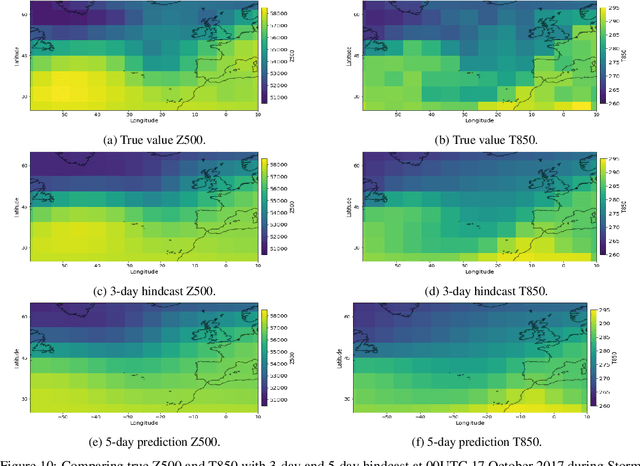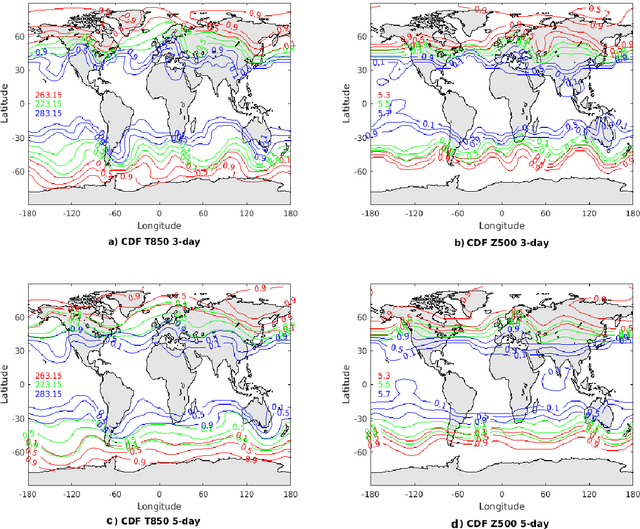Mariana Clare
Robustness of AI-based weather forecasts in a changing climate
Sep 27, 2024


Abstract:Data-driven machine learning models for weather forecasting have made transformational progress in the last 1-2 years, with state-of-the-art ones now outperforming the best physics-based models for a wide range of skill scores. Given the strong links between weather and climate modelling, this raises the question whether machine learning models could also revolutionize climate science, for example by informing mitigation and adaptation to climate change or to generate larger ensembles for more robust uncertainty estimates. Here, we show that current state-of-the-art machine learning models trained for weather forecasting in present-day climate produce skillful forecasts across different climate states corresponding to pre-industrial, present-day, and future 2.9K warmer climates. This indicates that the dynamics shaping the weather on short timescales may not differ fundamentally in a changing climate. It also demonstrates out-of-distribution generalization capabilities of the machine learning models that are a critical prerequisite for climate applications. Nonetheless, two of the models show a global-mean cold bias in the forecasts for the future warmer climate state, i.e. they drift towards the colder present-day climate they have been trained for. A similar result is obtained for the pre-industrial case where two out of three models show a warming. We discuss possible remedies for these biases and analyze their spatial distribution, revealing complex warming and cooling patterns that are partly related to missing ocean-sea ice and land surface information in the training data. Despite these current limitations, our results suggest that data-driven machine learning models will provide powerful tools for climate science and transform established approaches by complementing conventional physics-based models.
A computationally efficient neural network for predicting weather forecast probabilities
Mar 26, 2021



Abstract:The success of deep learning techniques over the last decades has opened up a new avenue of research for weather forecasting. Here, we take the novel approach of using a neural network to predict probability density functions rather than a single output value, thus producing a probabilistic weather forecast. This enables the calculation of both uncertainty and skill metrics for the neural network predictions, and overcomes the common difficulty of inferring uncertainty from these predictions. This approach is purely data-driven and the neural network is trained on the WeatherBench dataset (processed ERA5 data) to forecast geopotential and temperature 3 and 5 days ahead. An extensive data exploration leads to the identification of the most important input variables, which are also found to agree with physical reasoning, thereby validating our approach. In order to increase computational efficiency further, each neural network is trained on a small subset of these variables. The outputs are then combined through a stacked neural network, the first time such a technique has been applied to weather data. Our approach is found to be more accurate than some numerical weather prediction models and as accurate as more complex alternative neural networks, with the added benefit of providing key probabilistic information necessary for making informed weather forecasts.
 Add to Chrome
Add to Chrome Add to Firefox
Add to Firefox Add to Edge
Add to Edge